The Ultimate Guide to Salsa Songs for Learning Spanish
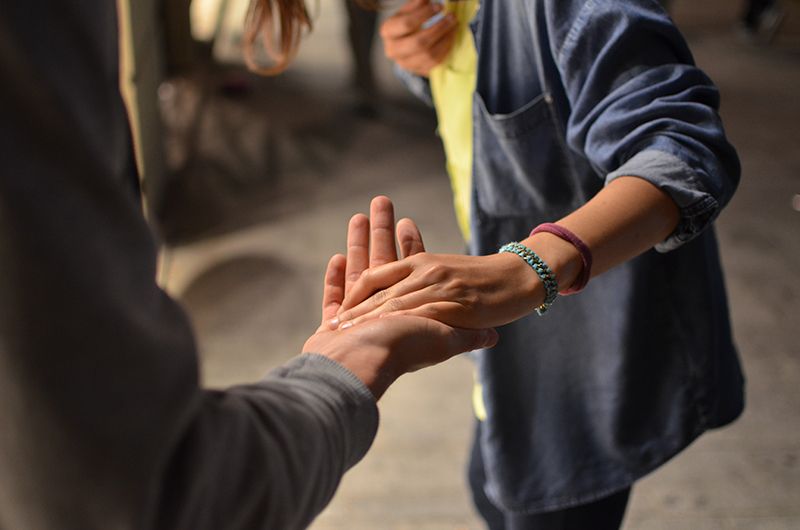
Are you planning a trip to Latin or South America? Are you tired of going to the gym and looking for a different physical activity?
Well, combine Spanish with dancing and you'll find a world of fun! The soaring popularity of Latin dance is not without reason, and Salsa is the best place to start. So, let's talk Salsa, translate the names of the Salsa dance steps, and find a place to practice...
The 2 Main Types of Salsa Dancing
Salsa Cubana (Cuban Salsa)
You may see Cuban Salsa classes listed as Salsa Rueda or Casino (Wheel Salsa or Casino) and although there exist distinct variations, we can call them all Cuban Salsa to simplify. Cuban Salsa has a basic step called guapea (chill out), which starts off with both dancers stepping backwards before returning to touch their loose hands together, all the while keeping tension and a connection between them with their other hand.
Salsa Linea (Salsa in Line)
This Salsa style is more extreme, the music changes more often, and the basic step (base) is quite different. This is a form of Salsa that has its origins in competitions around The United States and Puerto Rico, it is usually more energetic than Cuban Salsa. In Salsa Linea the man always starts stepping forward, his hand softly resting on the woman's upper back to set the distance between partners, whereas in Cuban Salsa the right arm of the male dancer is loose.
Both styles have the same rhythm, counted: 1, 2, 3...5, 6, 7. The accented beats are 1 and 3, 5 and 7, the pause in the between triplets is very important. Even though the rhythm is the same I would not suggest learning both styles at the same time. As a beginner you will not be able to translate what you learned in a Cuban Salsa class to a Salsa Linea class.
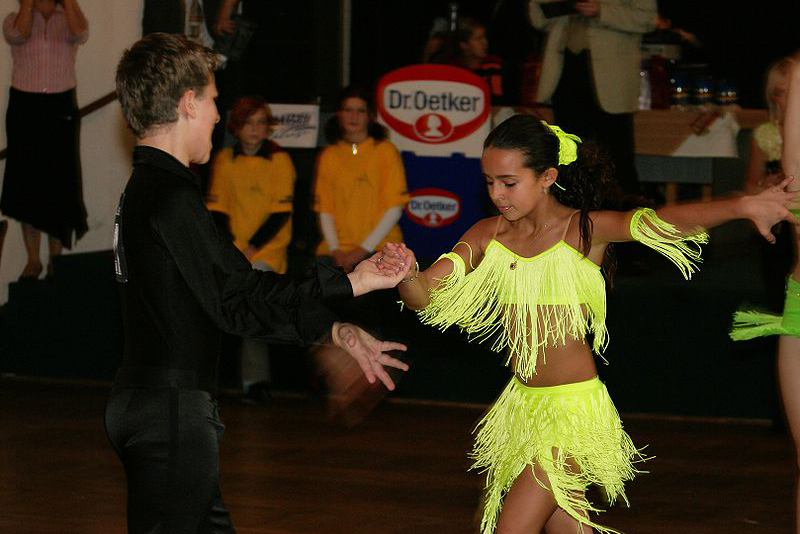
Salsa Dance Steps with Translation
For an amazing video which very clearly displays these steps click here after reading. For now, enjoy the vocabulary below.
Guapea - chill out (Cuban Spanish only)
This move is the base of Cuban Salsa, how you start dancing, and what you do if you feel offbeat and unsure of your next move.
Díle que no - tell her no
After executing a figure (sequence of moves), you will usually cap it off with a díle que no and restart in the basic step, guapea. The somewhat humorous name comes from the fact the male dancer steps forward instead of backwards to start the move.
Exhíbela - show her off
Named so because the man will have the girl face towards the inside and spin the woman to her outside (her right side while holding her right hand).
Vacílala - move her about
One of the basic figures. The male partner cues the woman with his left hand to turn to her right in front of him. At the end they will have changed positions.
Pa ti Pa mi - for me, for you
Correct spelling would be para ti para mi, but in colloquial Spanish the words are pushed together to create the shorter sound. This is something that happens in most languages, words get pushed together to facilitate hasty conversation. This move involves a spin for the woman and the man, hence one for you, one for me.
Enchufla - connect
A standard turn with the woman's arm crossing in front of her (spin to her left) and the partners changing the direction they face.
Sorpresa - surprise
What appears to be a normal vacílala is about to go into a díle que no, but...there's a surprise!
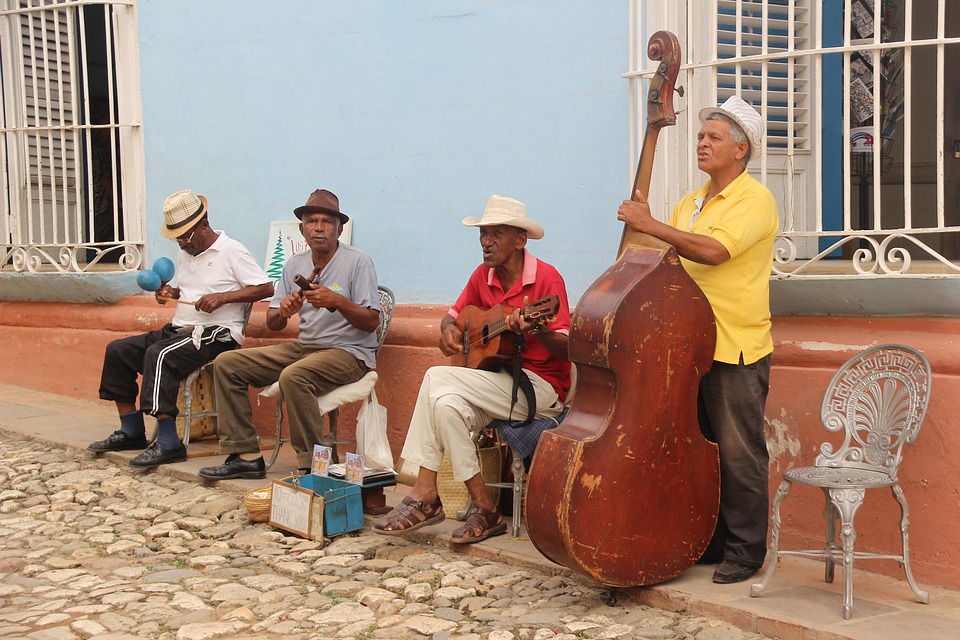
Salsa Songs for Spanish Learning
Apart from the dancing, the music itself is a great way to study. The lyrics of Salsa songs are usually quite simple and a great way for beginners to practice their Spanish skills. While you are dancing the Salsa dance steps pay attention to the lyrics too! Since we usually dance to the same song many times this repetition will make it even easier to memorize and repeat the lyrics. There are many famous Salsa showman, so start with these recommendations of easier to understand Salsa music:
"Conciencia" by Gilberto Santa Rosa
Ella tiene la magia de un instante de amor
y su mirada un toque de misterio.
Cuando ella llega siempre, suelo perder el control
no vuelvo a ser el mismo si la beso.
La conciencia me dice que no la debo querer
y el corazón me grita que si debo.
She has the magic of a romantic moment
and her gaze, a mysterious touch.
When she arrives, I usually lose control
I won't be the same if I kiss her.
My conscious tells me that I mustn't want to
and my heart screams I must.
¨Llorarás" - Oscar D'Leon
Sé que tú no quieres,
que yo a ti te quiera.
Siempre tú me esquivas
de alguna manera.
Si te busco por aquí
me sales por allá
lo único que yo quiero
no me hagas sufrir más rumberaaa..
I know you don't want
me to want you.
You allows avoid me
somehow.
If I look for you here
you go over there
all I want is
that you don't make me suffer anymore rumberaaa...
Both songs basically are about love and its ups and downs. In the second, check out the use of subjunctive, a difficult subject that I find much more approachable by using song lyrics.
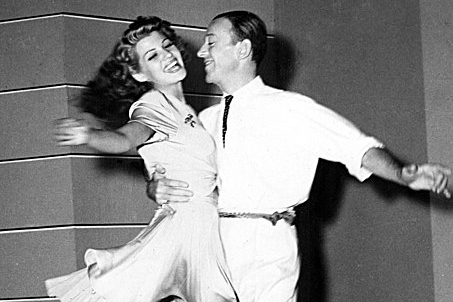
How do I find Salsa classes?
There are many ways to overcome an obstacle to your language learning, many people recommend to take a step back from the books when you feel overwhelmed and try something new. So, take a very real step into the dance classroom. If you live in a medium-big sized city, you could very well find Salsa classes in Spanish, but regardless, the Salsa world tends to be full of native Spanish speakers more than willing to help you out with your Spanish.
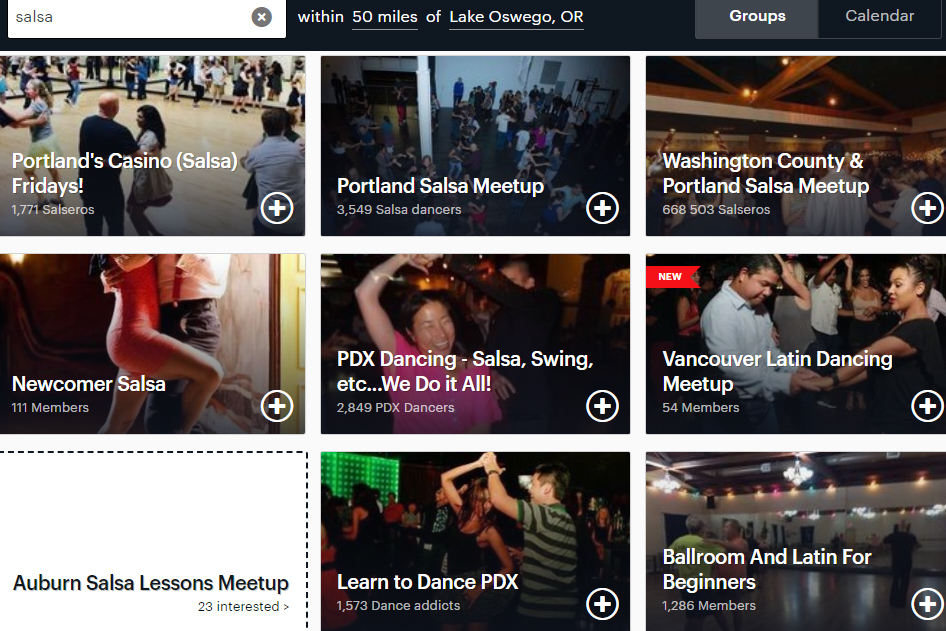
Meetup.com
In addition to just looking for Salsa classes online, Salsa groups can be a great way to immerse yourself in Latino culture and supply even more options. Pictured above are some example results from the website.
Make Spanish learning and Salsa Part of Your Next Vacation
In the Spanish speaking world, wherever you go, it is nearly guaranteed that you will find Salsa Linea and/or Salsa Cubana classes in Spanish. That is one of the beautiful things about these dances, they are very popular and can be found all over the world. The Salsa dance steps are like a universal language that will help you learn Spanish as well. I have taken Salsa classes in Spain, Mexico, and Russia. Although the country may be different, the steps and the dance stay the same.
